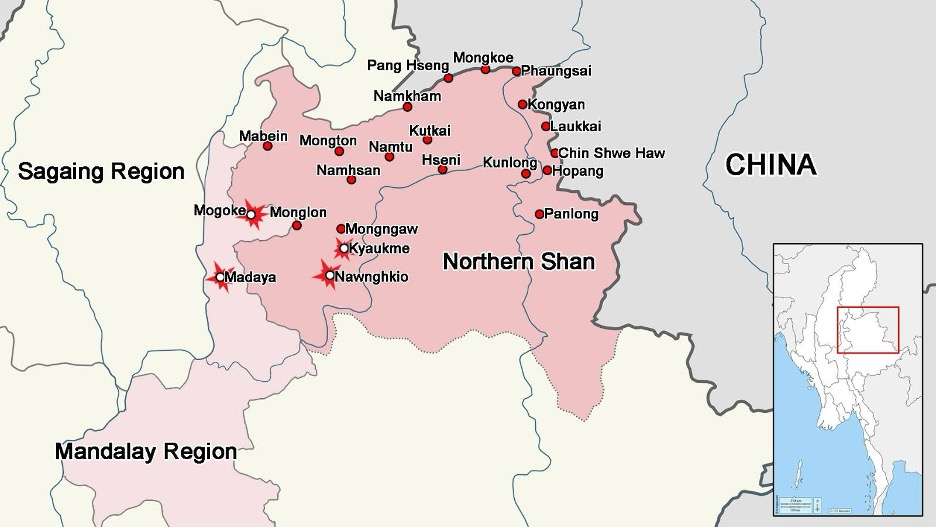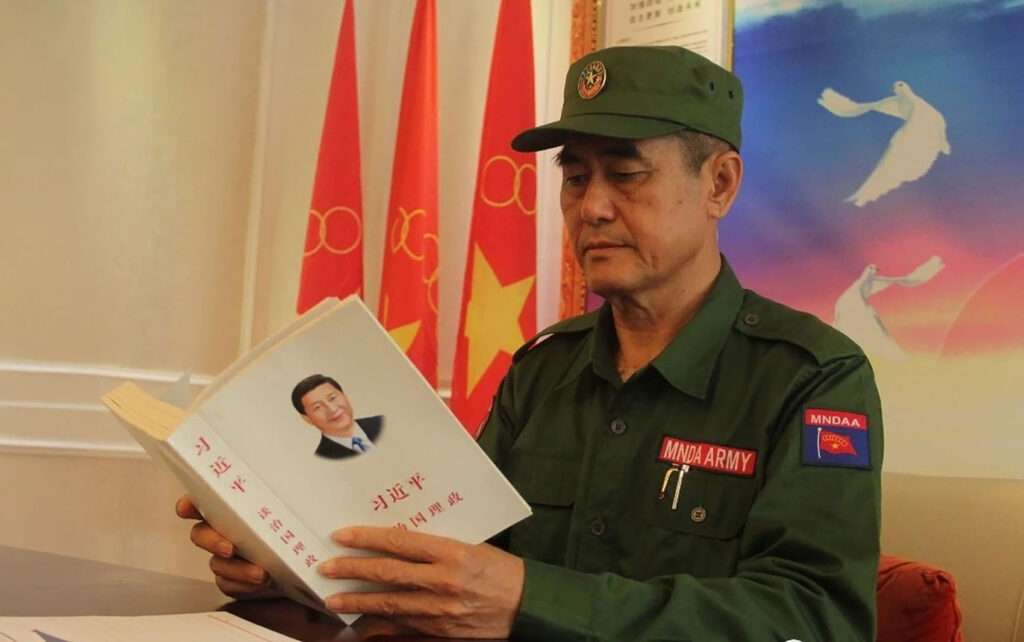Once seen as the master puppeteer in Myanmar’s complex civil war, China is now struggling to maintain its grip. What was meant to be a carefully orchestrated balance of power has begun to unravel, with ethnic resistance groups increasingly rejecting Beijing’s pressure tactics and exposing the flaws in China’s strategy.
According to officials of the Ta’ang National Liberation Army (TNLA), part of the Three Brotherhood Alliance (TBA), China is pushing hard for peace negotiations between the ethnic armies and the Myanmar military junta. The aim? To stabilize Myanmar under a regime that will allow unrestricted Chinese access to natural resources especially rare earth elements. But the TNLA isn’t complying.
Trade Leverage Fails to Intimidate
In a bid to coerce the TNLA into peace talks, China has recently blocked shipments to territories under the group’s control. The restriction of trade routes, a classic Chinese tactic was meant to starve TNLA-held areas into submission. Yet the group remains defiant, especially after recent battlefield successes.
Most notably, the TNLA and allied People’s Defense Force (PDF) units under the National Unity Government (NUG) seized control of Mogoke, Myanmar’s ruby capital, after a month-long offensive. The fall of Mogoke marked the third major town taken under Phase 2 of Operation 1027, a powerful anti-regime campaign launched by ethnic forces last year. Ironically, Operation 1027 was originally green lit by China. It served Beijing’s short-term goal of pressuring the military junta. But once ethnic armies gained too much ground, China panicked and shifted to damage control, demanding ceasefires and ordering resistance groups to pull back.
Ironically, Operation 1027 was originally green lit by China. It served Beijing’s short-term goal of pressuring the military junta. But once ethnic armies gained too much ground, China panicked and shifted to damage control, demanding ceasefires and ordering resistance groups to pull back.
Rebels Turn Against Beijing
The Myanmar National Democratic Alliance Army (MNDAA) also part of the TBA was forced to relinquish control of Lashio, a key city it had liberated during Operation 1027. China orchestrated this handover in April 2025, with Chinese envoy Deng Xijun personally overseeing the process. The town of Hseni, also captured by MNDAA fighters, has since been transformed into a Chinese commercial hub, after Beijing brokered a localized ceasefire.
However, Beijing’s efforts to set up a “Ceasefire Monitoring Office” in Lashio have floundered. The project remains unopened for over a month, reportedly due to logistical issues, MNDAA distrust, and widespread local resentment toward China’s role in empowering the junta.
Sources close to the MNDAA confirm that many fighters feel betrayed by Beijing, which had once promised strategic support but then turned to protect its own economic interests. The result is a deepening divide between ethnic resistance forces and China’s political agenda.
Ethnic Armies Resist Chinese Blueprint for Myanmar
China’s push for peace under junta terms—to install a resource-friendly puppet regime—has failed to gain traction among multiple ethnic armed groups. While some factions have been coerced into temporary ceasefires, the TNLA and several units under the NUG flatly refuse to engage in any power-sharing arrangement with the junta, especially one brokered by Beijing.
Additionally, the Arakan Army (AA) and Chin National Army (CNA)—both of which control significant territory have resisted Chinese attempts to mediate on behalf of Naypyidaw. These groups have strengthened local governance structures, set up autonomous administrations, and are increasingly hostile to any foreign interference that enables the regime’s survival.
China’s “dual-track” policy supporting both the junta and ethnic armies when convenient—is now seen as duplicitous and unsustainable.
China’s Loss Is India’s Opportunity
With China’s influence waning and resistance groups turning hostile, India finds itself in a rare position of opportunity. It shares borders with the Chin and Kachin strongholds and has a history of backchannel communication with ethnic armies.
Now is the time for New Delhi to engage directly with groups like the Chin Army and Arakan Army, offering development partnerships, logistical aid, or even discreet strategic cooperation. By aligning with resistance forces disillusioned by Chinese betrayal, India can secure its eastern frontier, counter Chinese encroachment, and support democratic transition efforts in Myanmar.s
China’s Gamble Is Unraveling
China sought to use Myanmar as a geopolitical chessboard arming rebels one day, pushing ceasefires the next all to secure access to jade, rubies, timber, and rare earth minerals. But ethnic armies have grown wise to the manipulation. The TNLA’s defiance, the MNDAA’s simmering anger, and the growing independence of other ethnic factions are all evidence that Beijing’s strategy is collapsing.
As China’s efforts to stabilise the junta for its own benefit fail, a new regional realignment is possible if others, especially India, choose to act.

